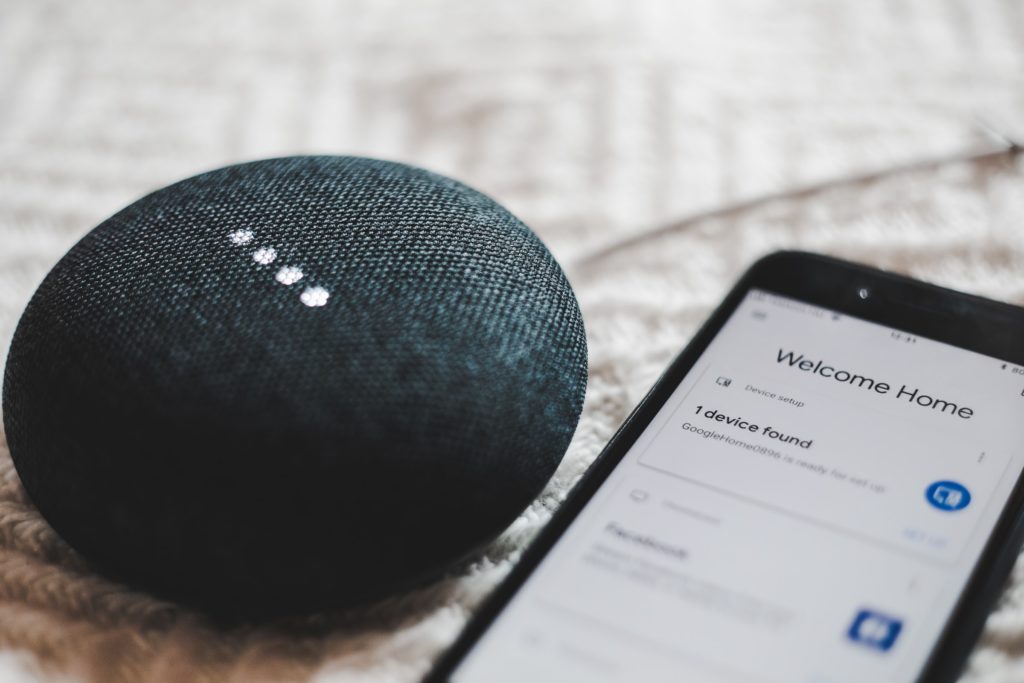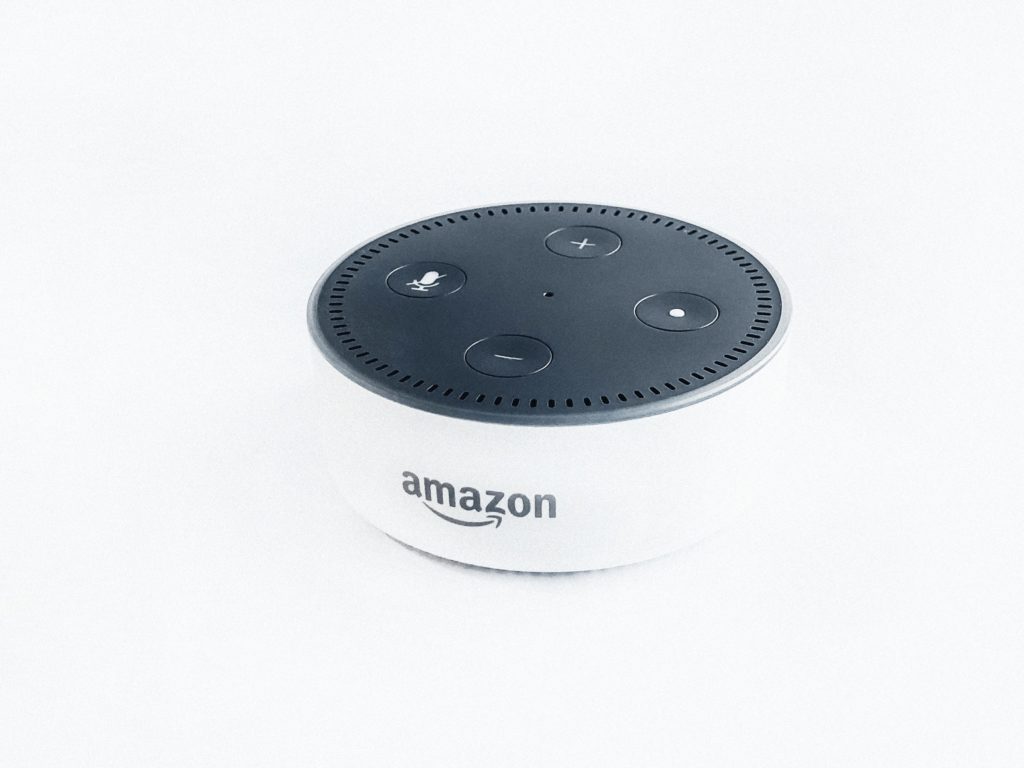Seventy-two percent of consumers use voice search through personal digital assistants, and 25% of consumers have made a purchase using a digital assistant. The latter may seem like a small number in the grand scheme of all that ecommerce has to offer, but it shows a trend of voice commerce adoption among the global community.
Voice commerce is gaining ground as the next frontier of ecommerce, and ecommerce sellers need to be aware of how to leverage it for their stores, especially as the race for the future of search between the tech “giants” forges on.
This article, backed up by opinions from our expert community, will help you understand how voice commerce can improve your brand positioning and improve your ranking in search results.
What is voice commerce?
Voice commerce is the use of voice commands to search for and purchase products online.
If you’ve never used a digital assistant, i.e., Apple’s Siri, Google’s Assistant, Amazon’s Alexa, Microsoft’s Cortana, and the like, then you’re among the minority. According to a Microsoft report, 72% of people say they have performed a voice search through a digital assistant.
While digital voice assistants and their accompanying devices have improved significantly in recent years, there are mixed opinions about the inherent value and current potential for voice commerce. Some believe that it’s overhyped, and others genuinely think it’s the future of commerce.

A 2019 report by Walker Sands may just prove the latter crowd right, as it says that, “Purchases made through voice-controlled devices are still low, with just 15% of consumers reporting having made one in the past year. However, of those with a device, two out of five (42%) report having made a purchase with it, indicating an increasing comfort among those with devices. For consumers ages 26-35 that number is as high as 53%.”
As Kurt Elster, host of the Unofficial Shopify Podcast, said, “The magic of voice shopping is convenience, with the ideal use case being re-orders of consumable goods, especially since smart speakers are often in or near the kitchen. Imagine this: you’re in your kitchen, you take the last of your multivitamin, and say aloud, ‘Alexa, re-order multivitamins,’ and you’re done. They’re on their way to you. That’s literally the fastest, most convenient way possible to purchase anything. Voice search is here to stay, and we fully expect adoption to steadily increase over time.”
The state of voice commerce
Major franchises are getting into the voice-enabled shopping game. Companies like Amazon and Walmart are making it easier for customers to fulfill their shopping lists with voice search.
Walmart announced Walmart Voice Order in partnership with Google, which allows customers to order groceries with a simple, “Hey Google, talk to Walmart.” This command will add items directly into a customer’s cart, with the promise of accurately identifying requested items and improved performance as customers use the command.
Amazon is also incorporating the same concept with AmazonFresh. The platform allows customers to shop through any Alexa-enabled device. Although Amazon has more time and money to invest in their processes than most ecommerce retailers, the idea behind improving the consumer shopping experience is the same: to take everyday activities one step into the future.
Adoption by these superstores and huge ecommerce platforms points to the prediction that stores that are “one-stop shops” will become the go-to for consumers as digitization influences more and more parts of people’s lives, and more stores like these will become the norm.
As Ross Simmonds, founder and CEO of Foundation Marketing, put it, “The main way voice shopping is changing ecommerce is the monopolization of basics. It’s easier than ever to reorder toilet paper, Clorox, tissue paper, batteries, and light bulbs using voice.”
Also worth mentioning is Starbucks, which pioneered voice ordering in 2017 by allowing customers to purchase coffee and food from them using a voice assistant. However, their partnership with Alibaba, the ecommerce giant, took this one step further.

In China, consumers who have the Tmall Genie speaker, created in partnership with Alibaba, can order from a nearby Starbucks and have their purchase delivered to their location. They can also stream Starbucks’ signature coffee shop music, showing Starbucks’ commitment to personalization and convenience for customers.
Expected trends in voice commerce
Voice commerce has established itself as a mainstay in commerce. Its capabilities will only improve. Here are some expected trends as voice commerce gains ground.
Interactions with artificial intelligence will get better
Currently, conversations with your digital assistant are error-filled. However, the companies behind AI tech are already taking steps to improve the core interaction with these assistants using natural language processing or NLP.
In a survey of 501 voice search users in the U.S., only 5% of them never get frustrated when their voice assistant misunderstands them. However, companies like Amazon and Google are working hard to resolve this and many other issues.
Amazon announced in September 2020 that Alexa has been upgraded to respond better to multiple people asking questions and to be smarter about asking clarifying questions and remembering the answers. They also announced that Alexa’s functionality is also being updated to change its tone in response to the conversation.
Google also released a product update regarding their work to improve the NLP of their AI, stating that they had made significant improvements in voice recognition and understanding queries, calling it a huge leap forward in the history of search.
These improved interactions might be anything from assistants starting conversations without prompting to holograms. Through consistent updates like these, we can look forward to improved interactions with voice assistants sooner than we might think.
Comfort with everyday usage of voice commerce will grow
One reason consumers fail to adopt voice commerce, as Microsoft’s Voice report pointed out, is consumer trust. But the experts expect comfort with AI to increase.
As Tracey Wallace, director of marketing at MarketerHire, stated, “The younger generations that have grown up with voice technology are reaching the age where they can make purchases, and their aversion to doing it over voice instead of online or through a social platform is much, much lower. They are driving us toward higher and higher adoption of a variety of new shopping channels –– voice, gaming, social media, etc.”
At the moment, 54% of voice search users believe that digital assistants will help them make retail purchases within five years. Another 38% and 25%, respectively, would like their assistants to understand their purchase preferences and make routine purchases on their behalf. However, Simmonds mentioned that “…it’s [voice commerce] still something that feels foreign when it comes to clothing or more taste/expression driven purchases.”
However, as the developers of these assistants improve on them, comfort with their everyday usage will increase and so will the adoption of voice commerce. Already, Google reports that 20% of the searches in the app are done by voice.
Different assistants for different purposes
Already, there are many places where AI is ingrained in our daily lives. Along with the usual suspects on our phones and in our homes, AI and the virtual assistants created with it are changing how the familiar things we interact with operate.
There is Amazon Echo Auto that is designed for cars. Carmakers like BMW and Ford are also partnering with Amazon to build Alexa voice integrations directly into their cars. Both options let drivers talk with their assistants while driving, an activity that’s becoming more commonplace among consumers, according to the Microsoft Voice report.
Hotels are also jumping on board. Some Marriott hotel locations now include Amazon’s product, Alexa for Hospitality, which lets guests order room service with a command to the devices in their room. However, there will be an increasing focus on the different use cases of voice-enabled assistance, including while shopping.
Imagine if a voice assistant can learn your customers’ style preferences or their skin tone, so they can order the right shade of foundation with a sentence, or even their preferred brand of toilet paper. No matter where the product is being ordered from, adoption of voice commerce will grow because of the convenience this offers customers.
3 reasons to leverage voice commerce for your ecommerce store
Although adoption has been increasing in the past few years as voice-enabled shopping improves, you might be hesitant to implement it in your own ecommerce store. Here are some reasons you should leverage voice commerce in your own ecommerce store.
To evolve the customer experience
Voice commerce can change and improve the way your customers interact with your store, making the process more seamless without needing to spend on the requisite manpower for customer success.
Think of conversational commerce and all the buzz it’s been getting. Sephora uses a “virtual artist” to analyze your skin and facial features to recommend products to try (refer to the earlier section on “different assistants for different purposes”). H&M uses Kik bot as a virtual stylist to recommend outfits.
Some experts are already thinking of how to integrate it for their customers, with David Brier of RisingAbovetheNoise, stating, “Between Google Assistant and Amazon Alexa, more than 27 million devices have been sold in the U.S. alone and ‘speaking to one’s devices’ is now common (when adding in the over 500 million users who converse with Siri). Given that voice shopping sales are expected to hit the $40 billion mark by 2022, it’s going to be part of the ever-widening sphere of ‘brand user experience’ that we include for our clients.”

With these examples of how AI is being integrated into consumers’ shopping experiences, the use of voice search is a logical next step when thinking of how AI can be used for your customers.
To rally brand affinity
Consumers love brands that they can connect with in some way, and voice, the ultimate conversation tool, allows them to do that.
Although it isn’t quite ecommerce, we’ll use the AmazonFresh physical stores as an example. There have already been strings of TikTok and YouTube videos about the stores and their high-tech concept. This shows that younger consumers connect with the idea of the stores, enough to make content around them. The videos by these consumers also show a clear appreciation for the integration of Alexa (i.e., voice search) into the shopping experience.
Smaller brands can also leverage the benefit of increasing brand affinity using voice search. As Nick LeRoy, owner of Nick LeRoy Consulting, stated, “I believe one of the biggest benefits of voice search is for lesser-known ecommerce brands. Branding plays a large factor in the way that people shop. Voice search runs around brand preference and serves up the best answer directly to the consumer. ”
Also, think of your younger customers. Young people are more open to trying out new technologies and that extends to how they search. This sense of adventure is what makes them more likely to be early adopters of voice commerce.
We have a great article on how voice commerce is used among consumers and what brands need to take note of when optimizing for it.
To improve search optimization
Voice commerce is also a great way to adapt to your customers’ changing search and shopping habits. As Elster said, “For the time being, natural-language SEO efforts have the side effect of also optimizing for voice search.”
Here’s a scenario: you sell thrifted streetwear in your ecommerce store, and a consumer asks Siri “where to find thrifted streetwear near me.” If you’re already optimized for location and keyword-based searches, and you happen to be in the right location, that’s one new potential customer for you.
Following up on his comment from earlier, LeRoy also added that, “…we believe there is a correlation with voice search answers also tying to Google’s featured snippets (on Google devices). Since we can measure and report on organic search, we put an emphasis on chasing featured snippets knowing that an additional (less measurable) return could be in the way of additional voice search results.”
Google doesn’t yet release keyword data for voice searches, but you can still use general keyword research to figure out what people are asking that relates to your store or that you can optimize for.
Start small with voice commerce
Adapting to new developments in technology is crucial for any business owner. However, the investment is not anything to sniff at and may be a bit much for smaller ecommerce retailers.
Consider Spanish and Go’s strategy of optimizing their podcast, a top-of-the-funnel marketing channel, for voice search queries related to their business offering. Or improve your FAQs to be picked up by voice assistants as they scour the web to answer your customers’ queries. Optimizing for voice search will bring you one step closer to optimizing for how your customers actually communicate in their day-to-day. Try any of our top tips on taking actionable steps for implementing voice search for your brand.



